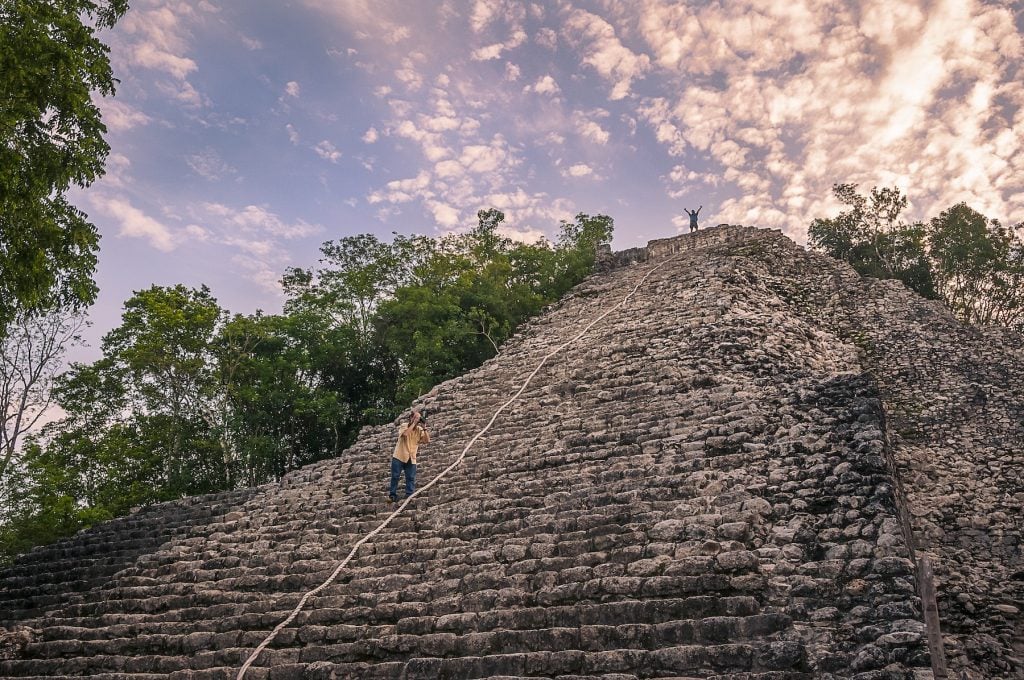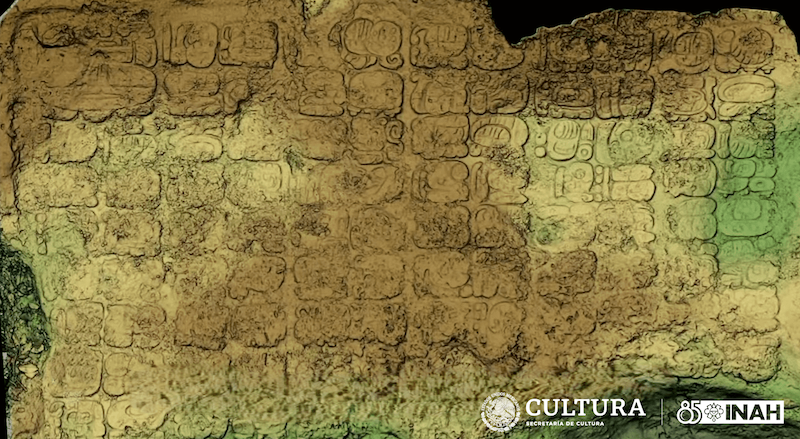Art World
A Newfound Tablet Adds the Name of a Previously Forgotten Maya King to History
The 36-square-foot stone also speaks of the mythical founding of the Mayan city-state Cobá.

The 36-square-foot stone also speaks of the mythical founding of the Mayan city-state Cobá.

Tim Brinkhof

During a conference on August 12, Mexican president Andrés Manuel López Obrador announced that workers from the Ministry of Culture’s National Institute of Anthropology and History (INAH) had found a tablet engraved with Mayan hieroglyphs near Nohoch Mul, a pyramid in the Archaeologic Zone of Cobá in Quintana Roo on the Yucatán Peninsula.
Indigenous peoples first settled in Cobá—derived from the Mayan word “Ko’ba a,” roughly meaning “choppy water”—between 350 BCE and 250 CE, with Mayan civilization blossoming between 600 and 1000 CE, or what historians of the Americas refer to as the Late or Post-Classic period.
The tablet, found in a waterhole some 500 feet away from Nohoch Mul, contains 123 hieroglyphic characters which—inscribed in the shape of an L—stretch across more than 36 square feet of rock. A preliminary study revealed that the inscriptions refer to a lost Mayan town by the name of Keh Witz Nal or “Deer Mountain,” which the tablet says was founded May 12, 569 CE.
The hieroglyphs also speak of a Cobá sovereign hitherto unknown to researchers, K’awill Ch’ak Chéen, whose reign fills a longstanding gap in the city-state’s dynastic history. In total, 14 rulers of Cobá have been identified, three of whom are women, and one of whom is said to have ruled for more than four decades. Many, like Ch’ak Chéen, adopted the monikar “K’awil” or “K’awiil,” a revered deity associated with lightning, fertility, and that all-important Mayan crop: maize.

Close up of the hieroglyphs found in Mexico. Photo: INAH.
Another section of the tablet alluded to a group of gods who were believed to have founded Cobá. These included a deity known as Bolón Tz’akab Ajaw, called the “lord of countless generations,” and responsible for the city-state’s bountiful harvests of corn and cocoa.
According to Diego Prieto Hernández, the president of the National Institute of Anthropology and History, workers at Cobá have moved the tablet out of the waterhole and are currently conducting a “thorough cleaning process” to remove soil, weeds, salts. Prolonged exposure to the elements, including heavy rainfall, have caused cracks and cavities to form throughout.
After the tablet has been cleaned, conservators plan to inject lime mortar fillings into some of these openings to fortify the rock’s internal strength. In addition to restoration, researchers will make detailed 3D models of the tablets to facilitate the study (and deciphering) of the hieroglyphs.
The tablet is scheduled to go on display in September at the Museum of the Eastern Coast in Jaguar National Park in Tulum. Meanwhile, a video about the new discovery by the INAH has been released on YouTube, featuring images of the excavation and the tablet.